At Te Mania Angus, the calves are weaned at five months of age. Early weaning has been introduced to enhance rumen function and to allow the females a better run through the Autumn and Winter.
All calves are weighed and tagged with an NLIS tag and stud tag on the day they are born. They are weighed again at weaning and at 400 days, when they are ultrasound scanned for marbling, fat cover and eye muscle area. Testicle measurements are taken on the bull calves. All this data is submitted to Breedplan.
All Te Mania Angus bulls are examined by a veterinarian immediately prior to sale day. This examination includes palpation of the sexual anatomy and measurements of the circumference of the testicles.
Structural assessments are carried out by Jim Green and are provided for each bull throughout the catalogue. This ensures that any bulls not meeting our uncompromising standards for structure are culled by an independent assessor.
When a bull leaves Te Mania Angus, he is leaving the security of a large mob and will arrive at unfamiliar territory at your property. If you can’t put him into the bull mob straight away, unload him and make sure he has a steer or cow as a companion.
A young bull can move in with older bulls and settle in well, but remember, being the youngest he will get the last of the feed available because of the pecking order. The paddock needs to be reasonably large so he can keep away from the others and find adequate feed.
Young bulls are still growing fast and need enough feed to maintain their growth pattern and to be able to settle the cows quickly and efficiently.
Te Mania Angus bulls are accustomed to being handled by stockmen on motorbikes and with dogs. Most of the fences are electrified and the bulls treat them with respect. Always be considerate to your bull and handle him with respect and kindness. You will find you will receive these acts of respect back from him.
Heath Treatments
7 in1 Vaccinations
All calves at Te Mania Angus are vaccinated twice as weaners, followed by an annual booster. We recommend bulls be given a 7 in 1 vaccination annually, 2 to 4 weeks prior to joining.
Drench
The bulls are drenched at weaning and periodically. They receive a drench before leaving the property.
Vibriosis
Vibriosis is a common cause of infertility and is transmitted by bulls from one female to another. It is easily prevented by vaccination. Te Mania Angus sale bulls have been given their primer and booster shots. For future years we recommend your bull be given an annual booster 4 to 6 weeks prior to joining.
Pestivirus (BVDV)
The bulls are vaccinated for Pestivirus prior to sale and we recommend annual boosters be given. For more information Pestivirus.
Best Practice – for the Working Bull
Bull:Cow RATIO
Bulls are most likely to develop problems early in the mating season. Specialist cattle vet David Beggs, maintains that a bull’s initial few days of mating can be likened to an athlete who suddenly started running long-distance races with no warm-up – problems were most likely to occur early on.
Under reasonable paddock conditions, a rising 2 year old bull should handle 40 empty cows on his own. An older bull can probably handle slightly more. Please be conscious that bulls following a synchronised program with cows returning over one week rather than three, will not decrease your bull requirement.
Before Putting the Bull Out
Before mating, cows should be seen cycling in groups with male calves also hanging around. The cows must be on a rising plane of nutrition, before you put the bull out, this ensures they have the optimum chance of cycling.
Observing The Bull
If a bull is going to develop an injury or condition that causes infertility, it is most likely to happen early in the joining period. It is important to monitor your working bull/s at least twice weekly to ensure they are able to mount cows, that they look physically normal and are not lame.
Towards the end of the mating period, you should spend some time watching the cows to make sure that large numbers of cows are not cycling. Set aside half an hour one afternoon when the cows are at rest to make sure that most of the cycling activity has stopped, and give yourself some peace of mind! Writing down the cows number at service and observing them 21 days later is the most thorough infertility check.
Reasons For Low Fertility
Even if a bull manages to serve his cows, there could still be semen problems. Semen needs to be produced at low temperatures and depends on a bull having a good diet – an injured bull that sits down a lot may produce sub-standard semen. And because it takes 50 days for semen to leave the bull after it is produced, once a problem was detected it is sometimes difficult to determine the cause. It is therefore vital that producers watch their bulls’ diets and behaviour carefully.
After The Mating
When the season is finished, the bull should be drenched and put away on good feed. Adequate feed will help stop fighting and help the bulls settle into their groups. With age, pay attention that the bulls remain in healthy working condition, and do not become too overweight.




